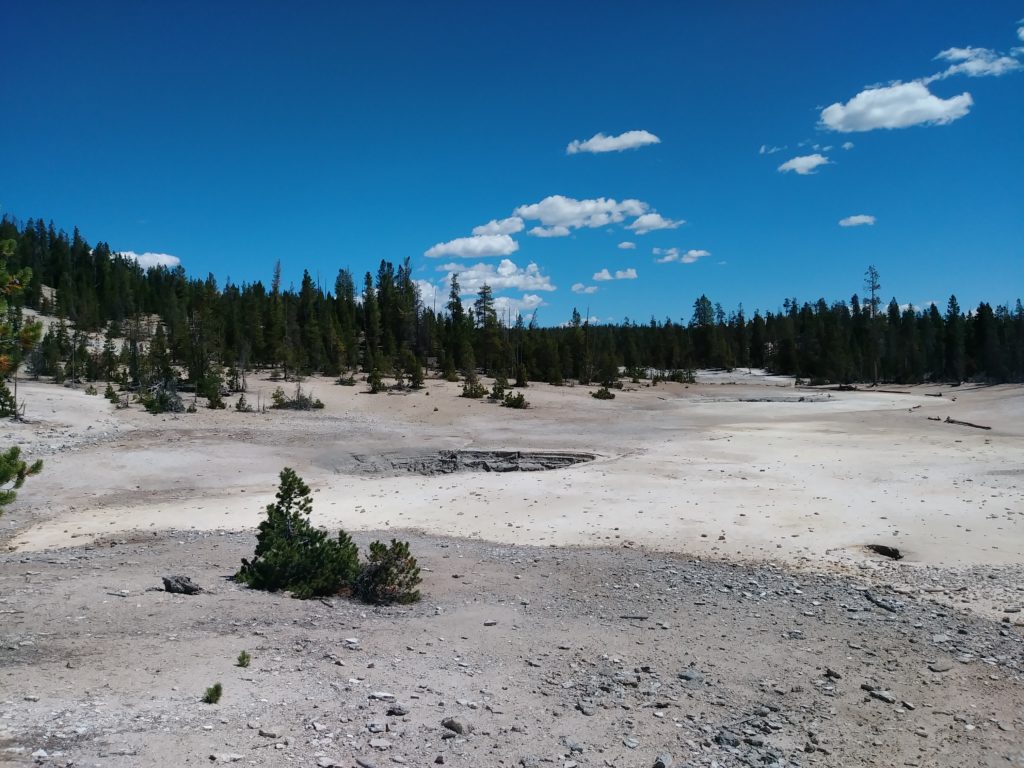Good morning, lovelies!
The latest installment of The Constellations is to be found here.
I am helpfully posting “Aries” at lunch so that the faint of heart may enjoy this tale of horror and madness and the devil himself… before dark.
The idea for “Aries” helpfully popped into my brain all but fully formed- the best stories do, in my experience. In fact, it presented itself to me while I was still trying to cudgel some manner of interesting plot for “Ara” out of my unwilling brain, and that was slightly frustrating timing.
I typed it up, using what remained of my laptop battery, right before I left Yellowstone.
Let me flesh that out a bit.
I typed it up as the temperature plummeted. I smelled the faintest tinge of sulfur beneath the scent of the lodgepole pines. I was huddled next to my campfire in the dark. By the time I finished, my fire had burned down, the wolves were howling, and I had to go sleep in a dark tent.
Delightful. I creeped myself out with this one.
About the constellation Aries and precession
Aries, the Ram, isn’t a particularly bright constellation. It’s the second-smallest constellation in the zodiac. However, it’s been recognized as a ram for a long time in the Middle East and environs.
The vernal equinox (the spring one) (an equinox being one of the two days of the year when the lengths of the day and night are equal- it’s when the sun crosses the celestial equator; as opposed to the solstices, when either the night or day is the longest of the year, depending on whether it’s the winter or summer solstice)…..
Right. The vernal equinox used to occur when the sun was in Aries, so it is also called the First Point of Aries, the starting point of the zodiac. Due to precession, the vernal equinox now lands in Pisces, and eventually (about 600 years from now) it’ll be in Aquarius. When that happens, it’ll actually be the Age of Aquarius.
I believe we talked about this for “Aquarius.” Consider that your review session.
Precession- essentially, the Earth wobbles as it spins, doing a complete wobble every 26,000 years or so. As it wobbles, the stars appear to shift places in the sky (the stars are themselves moving, too, of course). Thus, the North Star hasn’t always been the current one, Polaris. Thus, the vernal equinox shifts from one zodiac constellation to another- and, thus, the zodiac signs no longer actually correspond to the constellation overhead when one is born.
Since precession was discovered by Hipparchus of Nicea about 130 BC, there’s no excuse for astrology having ignored it all this time. Either the stars influence your life, or they don’t. What used to be the stars overhead in your birth month a few thousand years ago shouldn’t figure in.
Astrology- at least as currently constituted- is such horseshit.
Okay.
Before I got distracted by the fascinating subject of the Earth’s precession and my simmering frustration with the idiocy of modern astrology, I was going to talk about Aries.
I really was.
The ancient Egyptians saw this constellation as a ram. So, too, did the ancient Greeks.
The Egyptians associated Aries with Amon Ra, who was a big bug amongst their gods. If I ever write a second set of constellation stories, I’d like to explore this aspect of the mythology associated with Aries further.
The Greeks thought Aries was the ram from which the Golden Fleece came. This was a (winged) ram that rescued a prince and princess, Phrixus and Helle, carelessly dropping the princess into the Hellespont (which was named after her) along the way to Colchis.
You’d think Phrixus would be grateful to the goat for saving him, though, right?
Nope.
He sacrificed it and gave the Golden Fleece to the king of Colchis. (Eratosthenes saw the problem with this, and claimed the goat was immortal and had shed its fleece as a parting gift before it flew away.) Jason and the Argonauts came along, Medea helped Jason deal with the guardian dragon, and they made off with the Golden Fleece.
An alternative idea about Aries
I just… I’ve had it up to here with these Greek myths. I enjoy reading them, but using them as inspiration for my own stories can be extremely vexing.
Goats may have been the cat’s meow to the ancient peoples in Greece and the Middle East, but they haven’t always been viewed favorably.
I have heard that when the Pilgrims reached the New World, the first thing they did was send some elders ashore to check for prints made by cloven hooves.
Not a bad idea to verify you haven’t landed in Hell when you’re founding a colony, I suppose.
[I guess the deer weren’t hanging out around Cape Cod at the time?]
More recently, there’s The Witch, which I found to be a rather yawn-inducing horror movie; it presented a goat as… I’m still not sure. It was Satan, or a goat, or a witch’s familiar, or- something.
I think I was supposed to be frightened.
Anyways, the devil can walk among us as a goat, my dears. He’d appear as a goat or a satyr-like creature at witch’s sabbaths, apparently.
And that’s what got me thinking about Aries being a rather disreputable, evil constellation.
My first hike in Yellowstone, I didn’t realize I was a on a trail that led to some hydrothermal features. They were off the usual well-touristed routes, and devoid of the thermophile lifeforms that lend such pretty colors to the more visited hydrothermal attractions.
The landscape was barren, blasted, awful, disturbing. It stank.

That is what “Aries” is all about- a place where it really does seem the devil himself could happily walk the earth.